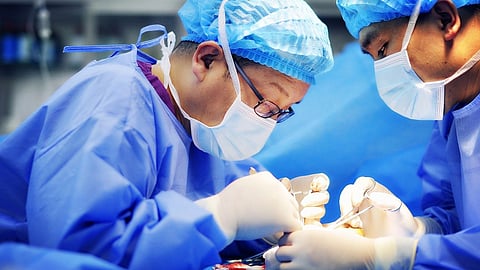

Researchers at the Rubin Institute for Advanced Orthopedics at Sinai Hospital of Baltimore have found a possible relationship between receiving chemotherapy within a year of a total joint replacement surgery and an increased incidence of infection in the replaced joint.
The analysis of more than 17,000 patients showed that infections in surgically replaced joints were significantly higher for patients who had undergone subsequent chemotherapy within a year compared to those who had not. The findings are published this month in the Archives of Orthopaedic and Trauma Surgery.
“We became curious about the potential effects of postoperative chemotherapy and the risk of joint infection as we saw cases in our own joint replacement patients,” explains Janet Conway, M.D., lead author and orthopedic surgeon at the Rubin Institute for Advanced Orthopedics who is head of Bone and Joint Infection at Sinai Hospital.
She continues, “Early detection of infection is vital, as early intervention can spare patients from more invasive treatments, including the need for surgery to revise the joint replacement. Our research suggests that joint replacement patients who go on to have chemotherapy need to be aware of their potential risk for increased infection, so they can be vigilant for any signs of infection and see their orthopedic surgeon early if any develop.”
The researchers analyzed records in a national patient database for those who had total knee arthroplasty, total hip arthroplasty and total shoulder arthroplasty who then underwent post-arthroplasty chemotherapy within one year after surgery between 2010 and 2022. They looked at the post-chemotherapy infection rates at two-, three- and four-year intervals.
“Given the number of people of receiving total joint replacements each year, as well as the cost both physically, emotionally and financially for those who develop an infection and may need subsequent treatment, we need to understand what factors may increase the risk for postoperative infections,” says Dr. Conway.
She concludes, “To our knowledge, this is the first study to comprehensively investigate the potential risk of postoperative joint infection for patients who later receive chemotherapy. Future prospective studies focusing on this potential correlation would be crucial, so that essential and preventative measures can be taken into account.”
(Newswise/GS)
